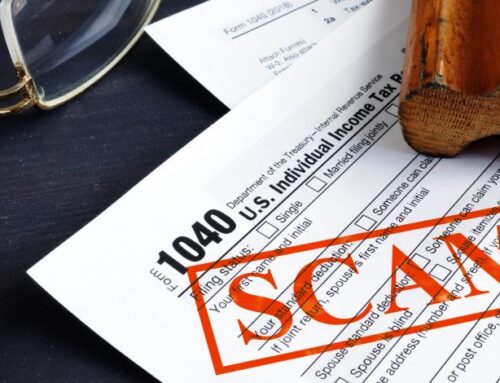Credit card fraud is not a new concept, but reports of this type of fraud have skyrocketed over the past few years. According to the Consumer Sentinel Network Data Book published by the Federal Trade Commission, there were 393,207 reported cases of credit card fraud in 2020—a 45% increase from 2019. In addition, credit card fraud ranked second among identity theft types—slightly behind government documents or benefits fraud.
While banks, credit unions, and credit card lenders have ramped up security measures to help prevent fraud, fraudsters have become more elaborate in their schemes. In this article, you’ll discover the various techniques fraudsters use, the best strategies to prevent credit fraud, how to detect fraudulent charges and how to properly report credit card fraud in the unfortunate circumstance you were victimized.
What Is Credit Card Fraud?
Credit card fraud is a form of identity theft that occurs when someone illegally obtains your credit card information to make purchases or cash advances. While fraudsters can receive your card’s information through various techniques and schemes, there are two main types of credit card fraud, according to the FTC. Those are:
- New accounts
- Existing accounts
New Account
New account fraud occurs when someone impersonates your identity to open a new credit card or another financial account in your name. Fraudsters will accomplish this by getting your social security number and personal information. This type of fraud was rampant and accounted for most credit card fraud cases reported in 2020. According to the FTC, there were 365,597 reports of new account fraud—a 48% jump from 2019.
Existing Accounts
When most people think of credit card fraud, they are most likely thinking of existing account fraud. This type of fraud can happen when someone receives your current credit card information and bank account to make purchases without your knowledge. While existing account fraud was less prevalent than new account fraud, many cases were reported in 2020. According to the FTC, there were 33,852 reports of existing account fraud—a 9% increase from 2019.
While reports of credit card fraud keep increasing year over year, there are a few things you can do not to become a victim. One of the best ways to do this is to be aware of the common techniques used by credit card fraudsters.
Techniques And Schemes Used By Fraudsters
Since banks, credit unions and credit card lenders have increased security measures to thwart credit card fraud, fraudsters have become more deceitful with the tactics they use. However, fraudsters commonly reach into their bag for ol’ reliable schemes. Being conscious of these techniques may prevent you from being their next victim.
Phishing Scams
This technique is one of the oldest tricks in the books for fraudsters to obtain your personal information and is still a significant problem. According to the FBI’s Internet Crime Report, there were 241,342 reported cases of phishing scams in 2020—a staggering 814% increase since 2018.
Phishing scams are designed to deceive individuals into divulging their personal information, such as credit card numbers or banking credentials. While phishing scams are mainly prevalent online due to spoof websites, other mediums such as phone, text and regular mail are also used by fraudsters.
One way to prevent being a phishing scam victim is to understand the anatomy of phishing emails. If you feel you may have received an untrustworthy message, visit the company’s legitimate website and log in there or call their customer service number to inquire about the message.
Credit Card Skimmers
This technique is also known as “skimming” and is one of the most elaborate and deceitful tactics used by fraudsters. Skimming occurs when a device is illegally installed on ATMs, point of sale (POS) systems, or gas pumps to obtain the user’s credit card data. Then, fraudsters may use that data to create fake credit cards and steal from the account. According to the FBI, skimming is estimated to cost financial institutions and consumers more than $1 billion per year.
Gas pump skimmers are generally attached to the internal wiring and not visible to the user. Once the device has retrieved your information, it will be stored and downloaded or wirelessly transferred later. To be less susceptible, the FBI suggests using a pump that is close to the store and in view of the assistant. They also recommend paying inside rather than at the pump.
ATM and POS systems are more intricate. For example, criminals may install up to three devices to steal your information. That includes the skimmer, a hidden camera or a keypad overlay to capture your PIN. To prevent yourself from becoming a victim of ATM or POS skimming, the FBI offers an array of suggestions. Some of those tips are:
- Take a moment to examine the machine before using it. If you notice anything loose, damaged, cracked or anything out of the ordinary, don’t use it.
- Gently pull the edges of the keypad prior to entering your PIN to ensure there’s no keypad overlay. Then, cover the keypad with your other hand while entering your PIN to ensure a hidden camera doesn’t capture your information.
- Tourist areas are considered a hotbed for skimming devices. So be cautious when traveling to one of those places.
- If possible, upgrade your card to one that has the EMV chip technology because, in the United States, there are fewer skimming devices capable of stealing chip data compared to magnetic strip data. However, EMV chips only improve security for in-person transactions and not for purchases online or over the phone.
Account Takeover Fraud
The most recent data shows that account takeover fraud is on the rise. According to Consumer Affairs, there were 679,000 reported cases of account takeover fraud in 2018—an astonishing 78% increase from 2017.
Account takeover fraud refers to someone getting a hold of your personal information to log into your account and steal the funds. Once they have gained access, they may change your contact information and address to make it more difficult for you to access your account.
A few tactics fraudsters use to get a hold of your information include:
- Data breaches: When large amounts of data are obtained via a data breach, your information may be sold on the dark web. If you know that your information may have been compromised in a data breach, contact your financial institution for further assistance.
- Password security: Many individuals tend to reuse passwords for multiple platforms, and by doing so, you are making yourself vulnerable to fraud. To reduce the risk of account takeover, try to use different passwords for different sites. In addition, if the site offers multi-factor authentication, make sure to turn it on to give yourself added security.
- Social engineering or phishing: A fraudster can access your account by acting like a trusted source. This type of fraud can be conducted via email, phone, text and snail-mail.
Card Theft
While this type of fraud doesn’t involve an elaborate scheme to get you to share your banking information, it’s still a prevalent tactic of credit card fraud. Some fraudsters will steal your card when you are not paying attention, or they’ll grab the entire wallet in hopes of getting cash, debits, credit cards and any other personal information that may be contained in your wallet.
Although not as common, a modification of this technique is to steal newly-issued credit cards out of your mailbox. If you lost or got your credit card stolen, you should immediately alert your credit card issuer and freeze the card.
Best Strategies For Keeping Your Credit Card Secure
There are numerous ways to proactively protect you and your credit card from fraudulent charges. We recommend that you:
- Keep your credit card in a safe place: Always be aware of where your card is located in public. Put your card in your purse or wallet and always keep them close to you. Thieves don’t need much time or to physically steal your credit card to obtain your information. Instead, they can take pictures using their phone and return the card without your knowledge.
- Be aware of fraud techniques: While fraudsters are always brewing up new ideas to steal your information, knowing the common tactics they use can help prevent you from becoming a victim.
- Properly destroy anything that contains your credit card number: You should never toss anything with your banking information directly into the trash. Instead, you should shred (if you have a shredder) or cut up any documents containing that information before throwing it away. This is because fraudsters may rummage through the trash trying to obtain financial information.
- Keep personal information confidential: Many large corporations and financial intuitions will never send unsolicited messages asking to verify personal information via phone or online. Generally, these messages are only sent when you request them.
- Review your billing statement each month: It’s always in your best interest to review your bank statement every month to ensure no fraudulent transactions were made using your credit card.
- Report any suspicious activity: If you notice suspicious activity on your account, report them immediately.
How To Report Credit Card Fraud
If you lost or got your credit card stolen, immediately report it to the issuer to freeze that card. This can proactively prevent fraudulent charges from being made. Many companies have 24-hour customer service numbers to deal with these types of situations. However, policies may differ depending on the company. Be sure to visit their website to get the most accurate information.
Although, if the damage has already been done, contact the card issuer to dispute the charges. Additionally, the FTC takes scams and fraud very seriously. According to the Official Guide to Government Information and Services, you can report scams online through the FTC complaint assistant or phone at 1-877-382-4357 from 9 a.m. to 8 p.m. EST.
Get Extra Help With Identity Monitoring Services
You can only control so much at one time. However, identity monitoring services may help you keep your credit card information and other financial information safe. Check with your local bank or credit union to see what type of precautions they can offer you.
Arizona Central Credit Union is here to assist you with any financial-related questions. Additionally, we offer a range of personal and business credit cards to help propel you to financial success. If you are suspicious of fraudulent activity on your account, contact us immediately, and we will help guide you through the process.



